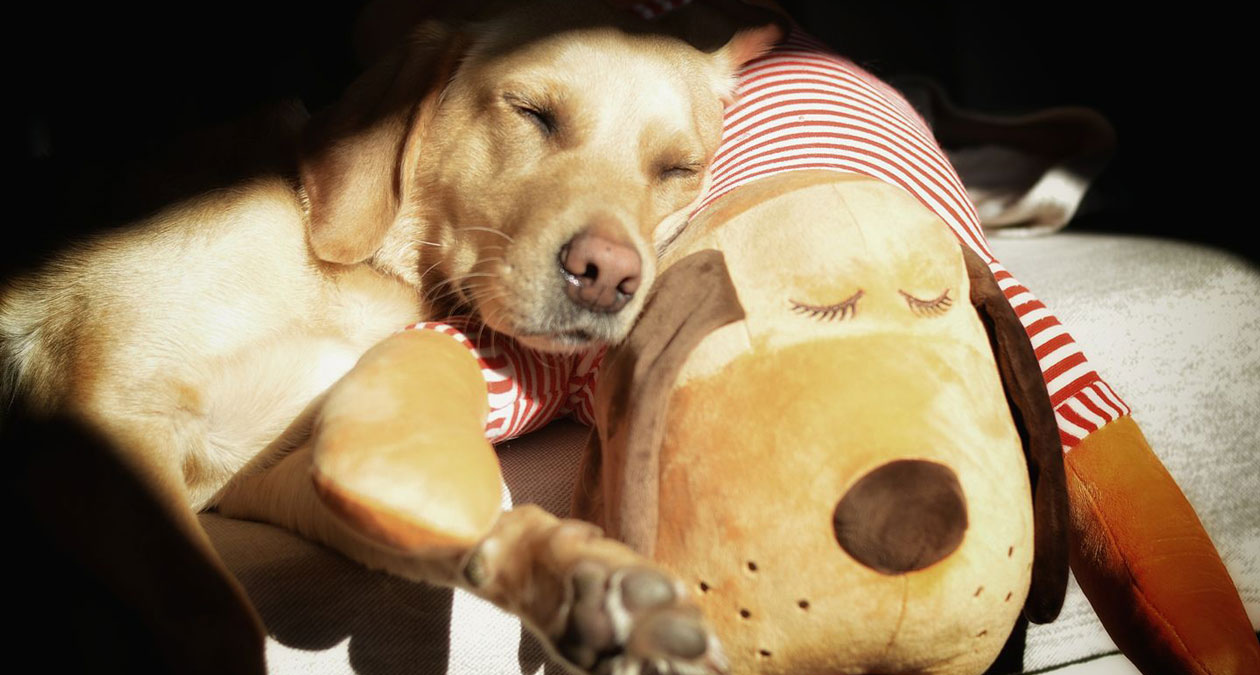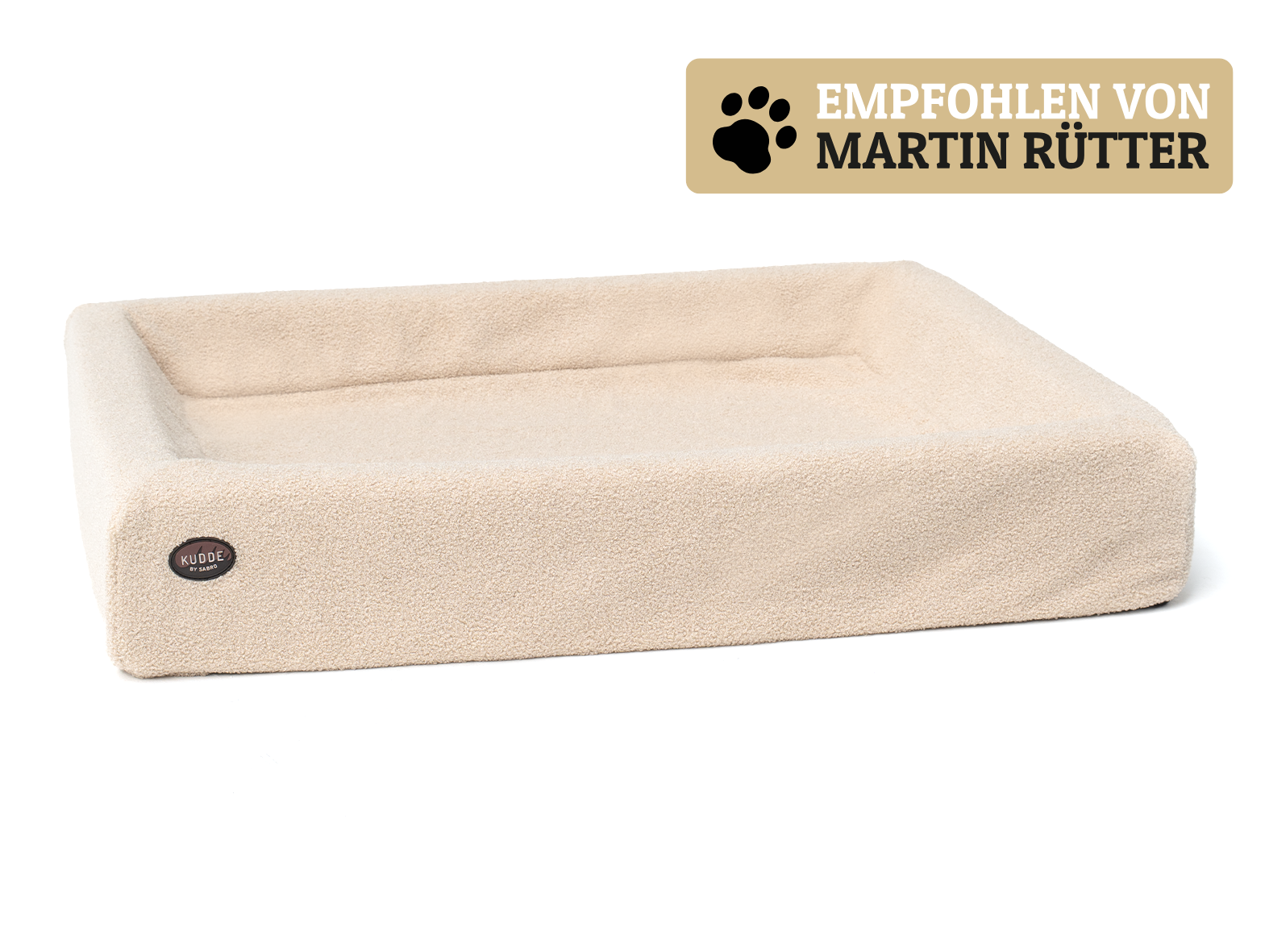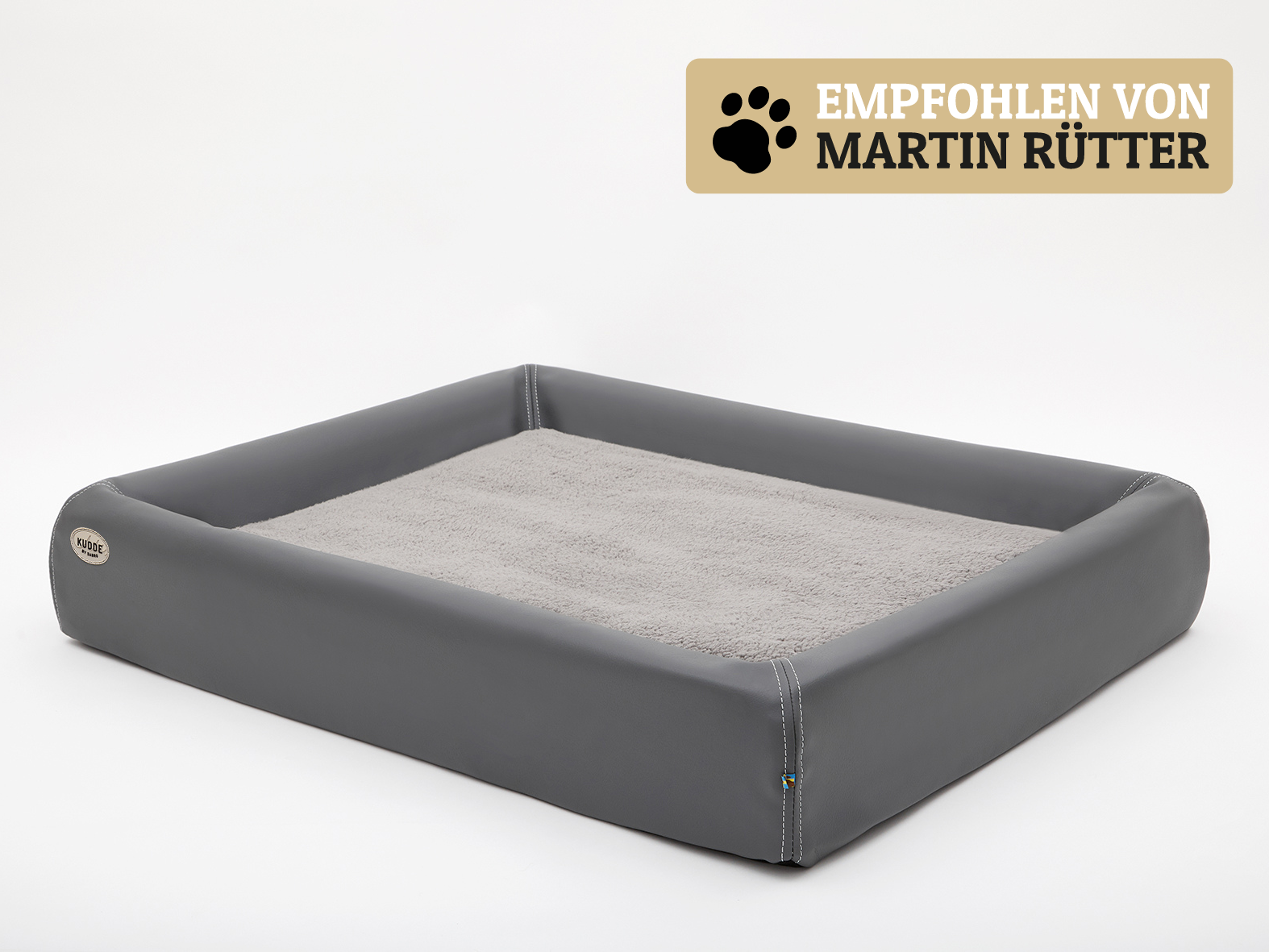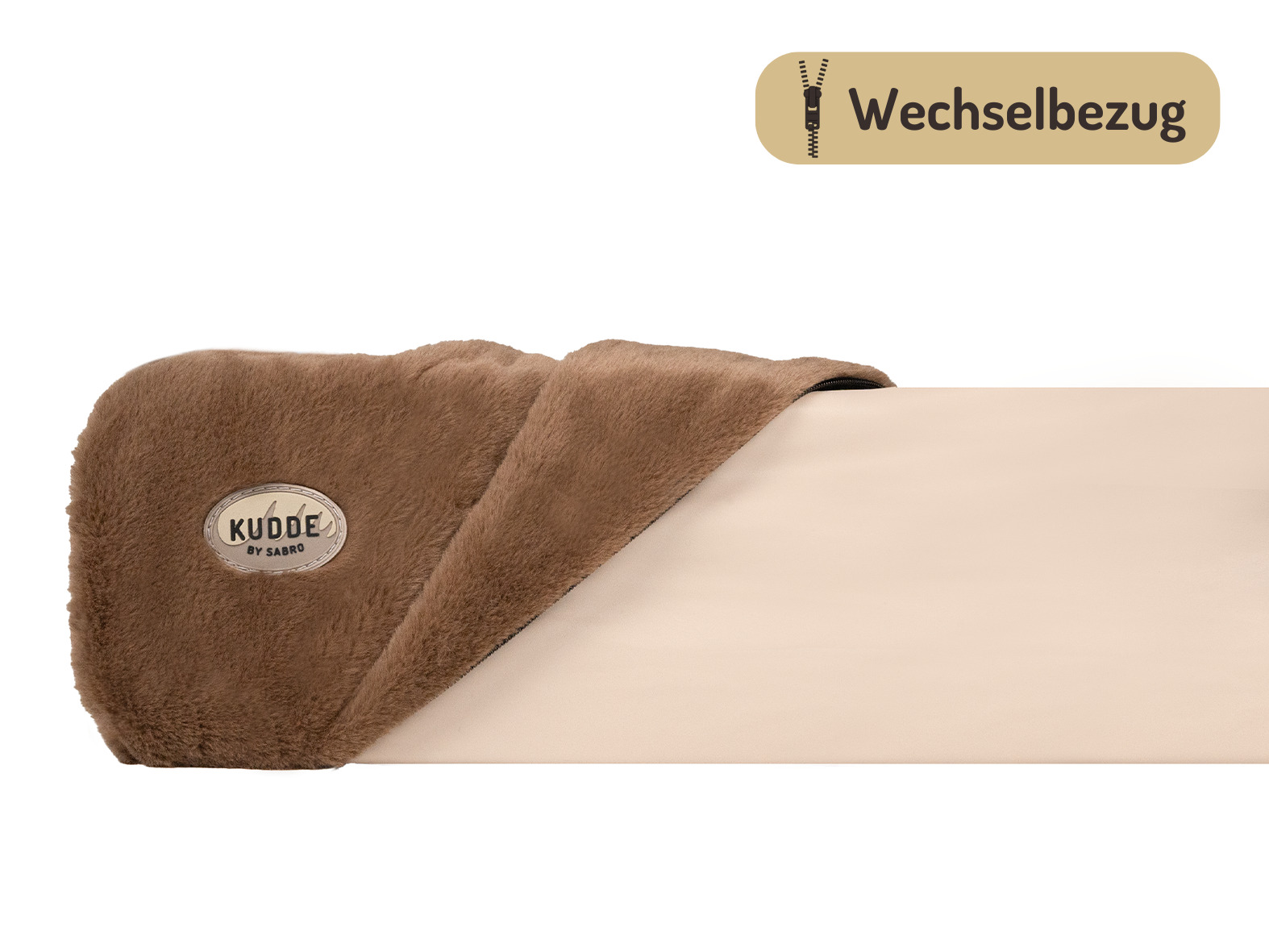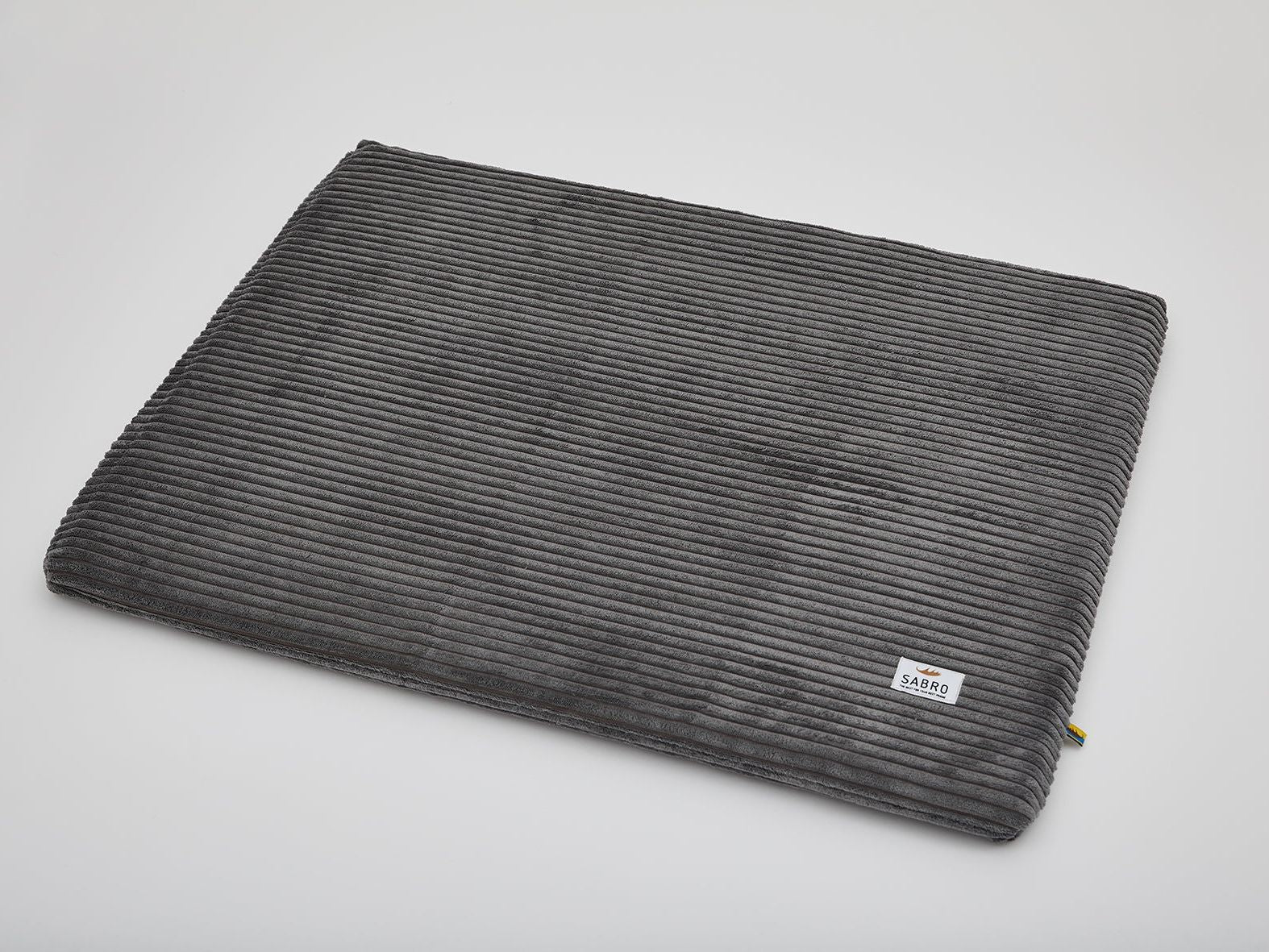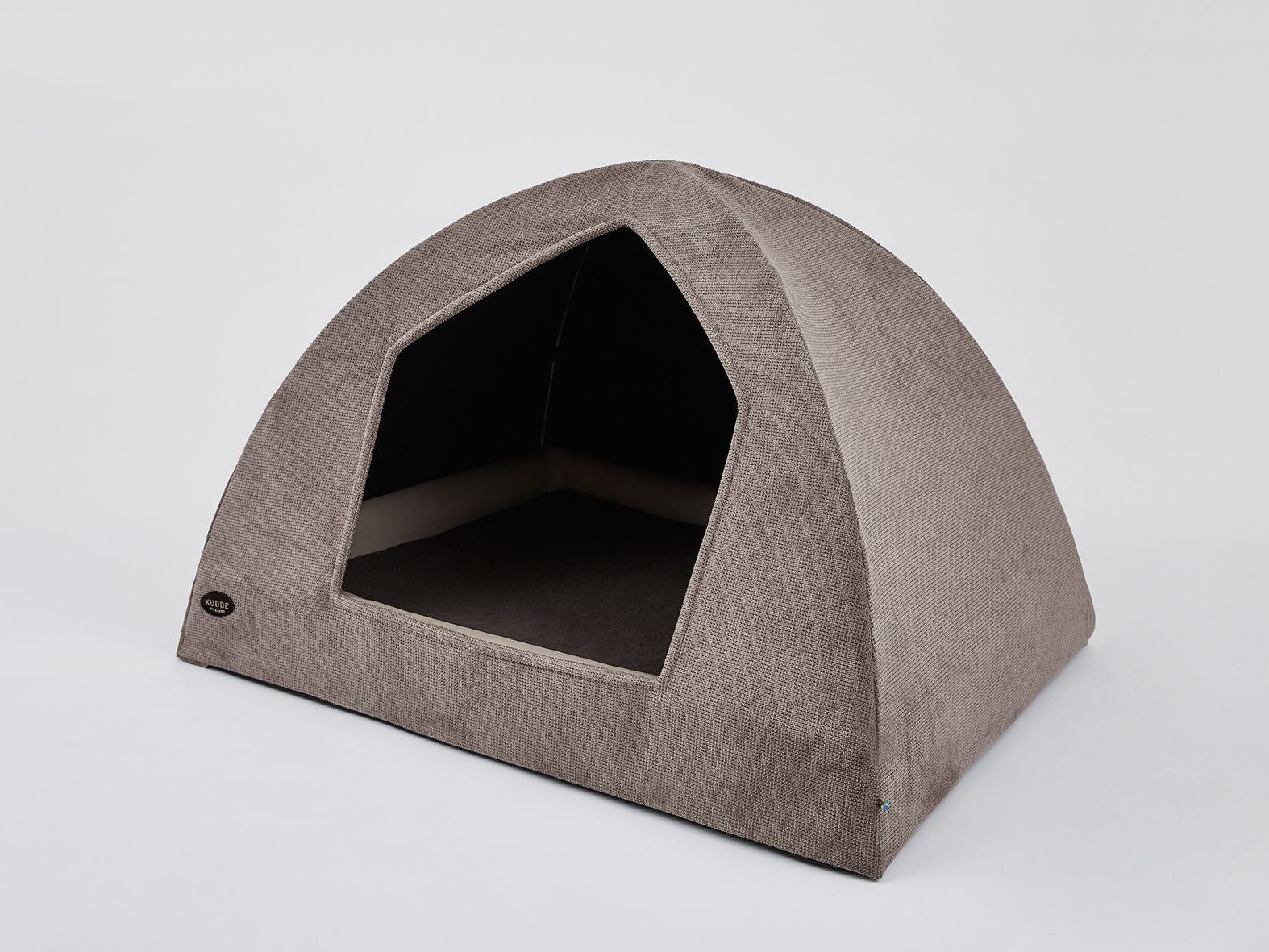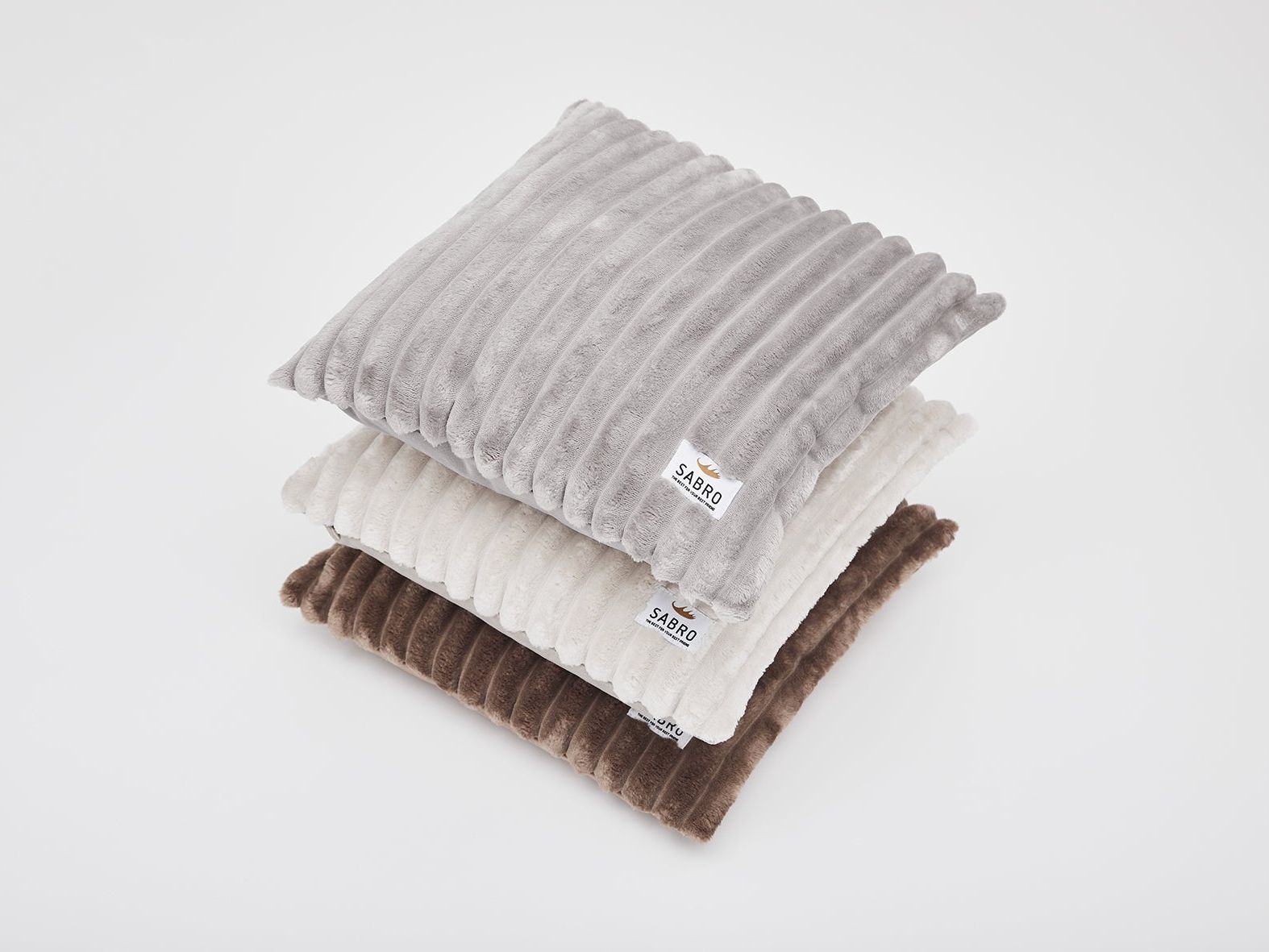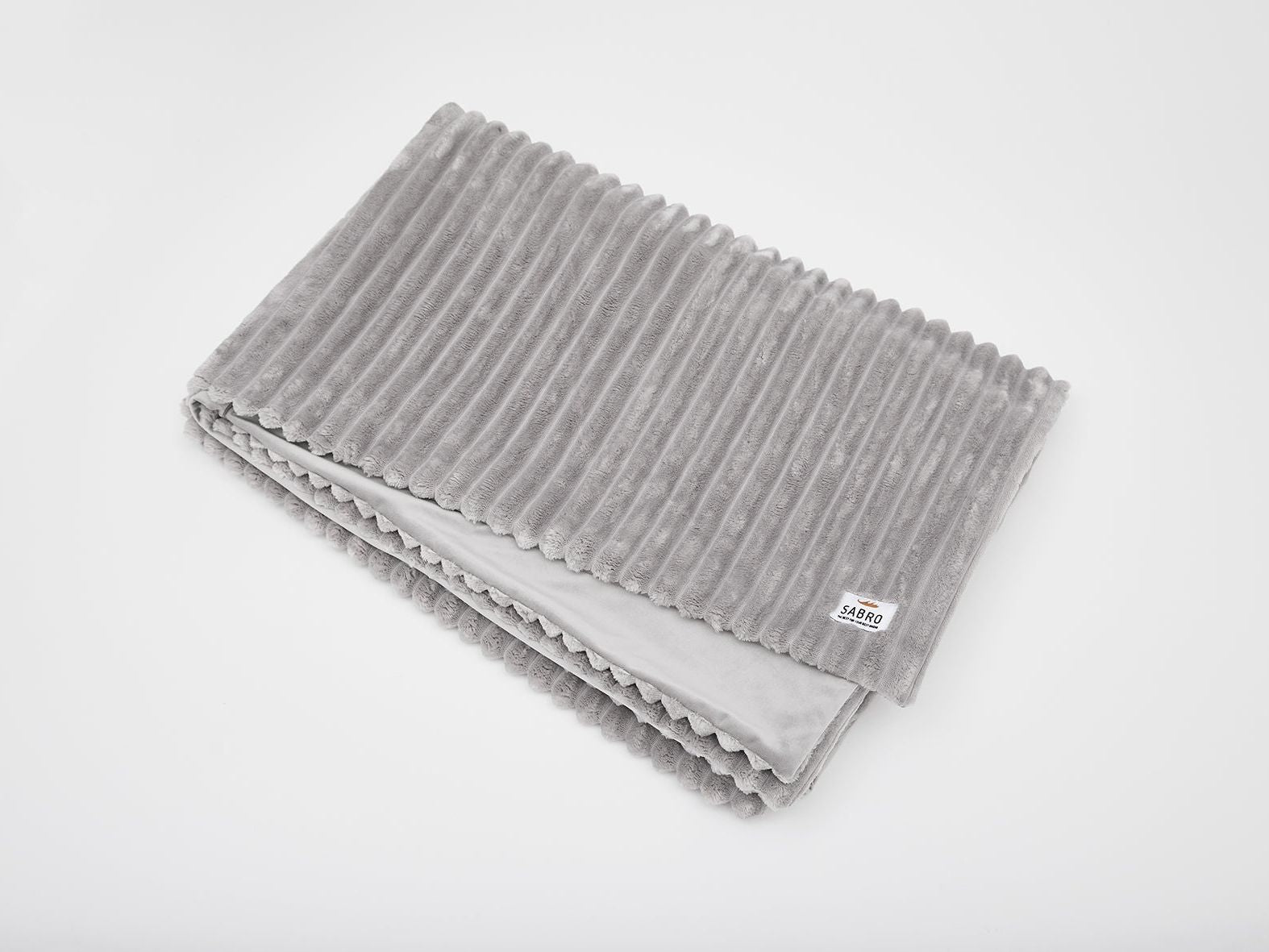The daily routine is probably the same for many dogs: there's not much going on at night, people are nearby, so as a dog you can close your eyes and sink into a deep sleep. The pack is together and - if you're very lucky - you can even lie in the bedroom with them and listen to the breathing sounds of your "pack members". This is incredibly calming, gives the dog a sense of security and can help dogs to sleep through the night or sleep alone. But where should a dog sleep and what is a good place for your dog to sleep at night? and above all:
What can I do if my dog doesn't sleep through the night?
The next morning, everyday life begins and it becomes more difficult for many dogs to rest. That's why they often only snooze during the day where we humans are. To meet their need for rest, you should create a comfortable place for them to retreat to - ideally with an orthopaedic dog bed that also provides the best possible support for their joints and muscles.
You can often recognize light sleeping or dozing very well by the dog's posture. In deep sleep, the dog's body is stretched out really long, which is usually easy to observe when your dog is lying on its sleeping place at night. There is hardly any noticeable body tension. When dozing, the dog often has its eyes closed, but is lying curled up - ready to open its eyes at any time to immediately register any deviations in the process.
Sufficient sleep is very important for adult dogs and puppies!
Dogs use sleep several times a day primarily as a recovery phase to process what they have experienced and gather new strength. And that's a good thing, because plenty of sleep gives dogs many positive characteristics:
-
Sufficient sleep in a suitable dog bed strengthens the dog's immune system and makes it less susceptible to many illnesses.
-
Dogs that rest and sleep regularly are much more relaxed in their appearance and behavior.
-
If a dog sleeps the appropriate amount for it, it learns faster and generally has visibly better motor skills.
Every dog must first learn to sleep properly again
The problem is that many domestic dogs are no longer used to these natural rest periods and are not only active at night because humans are too or because they think they have to keep their dog busy. These dogs need to be trained to rest more. A nap together with your four-legged friend can work wonders and show your dog that rest periods are very positive. And you yourself will also benefit from the occasional power nap.
This is also a good keyword: unlike us humans, who use the night to sleep and are active during the day, dogs use longer periods of rest throughout the day and night. The reason for this is the environment and their natural instinct: while we sleep in the dark and quiet of our bedroom at night, dogs are exposed to the constant activity going on around them. And as a vigilant pack animal, it is also more attentive than we are when dozing and resting.
How to recognize whether your dog is dozing, resting or sleeping soundly
As alert pack animals, dogs are born to be wide awake as soon as something happens. This is why they often tend to doze and scan their surroundings with their ears and nose. This can be recognized by the fact that the dog has its eyes closed but is breathing normally and neither whimpers nor twitches or anything similar.
When a dog is resting, it usually has its eyes open. Although he looks around, he lies calmly on his dog bed, on his dog mat or in his dog basket and is not immediately disturbed.
The real sleep phases of a dog are similar to those of us humans: after the passive sleep phase, in which the heart rate and breathing slow down and blood pressure drops, comes the active REM phase (Rapid Eye Movement), in which we and the dogs process the experiences of the day. If the dog twitches or whimpers with its eyes closed, it is in the deep sleep phase and dreaming. These are the times when you almost can't tear yourself away as an observer because it just looks too cute. While the REM phase accounts for around a quarter of sleep time in humans, it is only ten percent in adult dogs and slightly more in puppies. They therefore need more shorter sleep phases than we do.
Incidentally, tests with mice, dogs and humans showed identical patterns when there was too little sleep: first they were all more hyper, then less concentrated and more grossly motorized, followed by irritability and the first symptoms of illness, which could also become chronic in the end.
The ideal sleeping place for your dog offers protection and few distractions
Dogs' natural need to sleep is shaped by their experiences in nature. Wolves, for example, dig dens in which they lie down to feel safe and protected. Our Kudde dog bed, for example, is modeled exactly on these wolf dens. But a good night's sleep also requires the perfect place to sleep. As dogs are pack animals, they don't like to sleep alone. Nevertheless, the dog bed should not be placed in the middle of the room to ensure sufficient peace and quiet.
-
We recommend a location on a wall that is far enough away from the active two-legged friends, but still allows the dog to keep an eye on everything so that it can react quickly.
-
The dog bed should not be exposed to direct sunlight or draughts in order to prevent potential illnesses from the outset. The often quoted "dog in front of the heater" is also a no-go when choosing a suitable location. It can quickly become too warm for the dog next to a heater, which impairs its resting and sleeping phases.
-
A sleeping area that is not directly next to a door through which "the pack" must constantly pass, such as a hallway door or the front door, is ideal. The dog simply won't find any real peace and quiet there.
Our top tips for better dog sleep
Tip 1: The dog should never lie on the cold and hard floor to avoid joint problems. Every dog needs a thick dog mat, a dog basket with a mat or a real dog bed that keeps the cold away from the floor through insulation in order to sleep well. If the dog bed has a layer of viscoelastic memory foam, such as the Kudde, the weight is evenly distributed when lying down and helps the muscles to relax. It is also important to make sure that the sleeping area is really big enough. If it is not, the dog will get up and lie down in front of it in phases when it wants to sink into a deep sleep so that it can stretch out properly.
Tip 2: During the hours when the dog is not resting or sleeping, there should always be sufficient activity times. Dogs are also creatures of habit, so a regular daily walk before work and after "TV night" can improve your dog's sleeping behavior. Depending on the dog's age and need for activity, both walks should be long enough to really keep him busy and should ideally take place outdoors.
What you can do if your dog is panting a lot at night
Panting is completely normal for dogs, it helps them to lower their temperature as they do not sweat. If your own dog is now panting at night, you might be worried. All-clear in advance: short-nosed breeds (Pug, Pekingese) and large breeds pant more at night, as they need longer to lower their body temperature due to their anatomy. If the panting no longer seems normal, keep an eye on your four-legged friend and consult a vet if necessary, as panting can also be a symptom of an illness. However, it is also possible that the environment is responsible. Check the following points:
- Is the room temperature very high due to strong heating? Or is your dog lying close to the fireplace, a heater or another heat source? Eliminate the cause of the heat and observe whether your dog pants less afterwards. A cooling pad on warm days can also reduce panting.
- Are you often out and about with your dog just before you go to bed and he is very active? Or do you feed him late in the evening? Shift the activities or feeding earlier in the day and see if your dog then pants less at night and sleeps through the night.
- Is your dog stressed, for example because it's New Year's Eve or he's been frightened by police sirens? Under stress, dogs pant more than usual. This in turn can lead to your dog not sleeping properly at night.
That's why your dog sometimes sleeps with his eyes open
Don't worry if you notice that your dog seems to be sleeping with his eyes open. In this case, he is just dozing and keeping an eye on his surroundings so that he can protect his pack in case of danger. This type of dozing is particularly common in hunting dogs. Only very few dogs actually suffer from epilepsy or sleep apnea, which should be examined by a vet.
In addition, dogs have a nictitating membrane (a kind of third eyelid to protect the eyes from drying out), which he can pull down like a roller blind and leave the real eyelids open. So it just looks like he is sleeping with his eyes open.
You do not need to wake your dog when sleeping with your eyes open or half-open.
What if the dog sleeps too much?
Very important: there is a huge difference between sleeping and lying lethargically. If the dog appears sluggish and lethargic rather than tired or sleepy, you should first check his drinking and eating habits. If the dog consumes too little liquid or has hardly any appetite, this is a first alarm signal. Many illnesses cause dogs to have a greater than normal need for sleep. Just as we can hardly get out of bed with the flu, dogs are also visibly lethargic with the following illnesses, among others:
- if they are permanently underchallenged because too little attention is paid to them
- if they already suffer from canine depression
- if you have an underactive thyroid or diabetes
- if they suffer from Lyme disease due to a tick bite, for example
As I said, a lot of sleep is typical for dogs and in most cases no cause for concern, even if new dog owners in particular are usually surprised by this at first and may also be a little anxious.
However, one thing is also clear: if you notice a sudden change in your dog's activity behavior, the drinking and eating behavior decreases and the dog lies rather lethargically on its dog bed, it is better to consult a vet.
How much does your dog sleep? What do you do during the active phases? Let us know in the comments.

